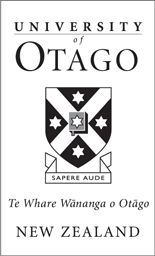Sarah Gallagher and Trish Leishman (Library)
StudySmart is a self-paced online course originally designed for second year medical students at the University of Otago by the Health Sciences Liaison Librarians (1). The course replaced in-class information skills labs and lectures and was piloted with this group in 2012 (2). In 2013, with support (3) from the Schools, StudySmart was additionally rolled out to second year Dentistry, Pharmacy and Physiotherapy students. With the exception of Dentistry, StudySmart has been accepted as a terms requirement or compulsory element within the Medical, Pharmacy and Physiotherapy curricula.
The content comprises of learning objects developed in-house (4) as well as appropriate Open Educational Resources (OERs) from external sources. It comprises a series of topics, tasks and quizzes which are built within the extant Learning Management Systems (LMS); Moodle and Blackboard. Academics are able to choose topics that meet their students’ need from an available pool that is edited or added to as required.
We intend to report on the qualitative and quantitative evaluation data we have collected that demonstrates the students’ level of knowledge and understanding after completing StudySmart, as well as reporting on what the students felt were the most valuable and least valuable aspects of the course. The majority of students who completed the course reported a increase in knowledge and understanding about the topics covered and were positively disposed to the value of the online course (5, 6). We also intend to report on some of the challenges we faced, upcoming changes we hope to implement, some of which are in response to student feedback, and the next step in the development of the course within the Health Sciences programmes for 2014.
References
1. Harker, E. (2009). Developing the library curriculum. Health Information & Libraries Journal, 26(4), 331-335.
2. Gallagher, S. K. J. (2012). Developing medical students’ information skills through online self-paced learning. In M. Brown, M. Hartnett, & T. Stewart (Eds.), Proceedings of the Australasian Society for Computers in Learning in Tertiary Education (ascilite) Conference: Future Challenges/Sustainable Futures. Palmerston North, New Zealand: Massey University.
3. Aida, F. (2001). End-user training in a virtual medical library setting – a case study of an academic medical library in Lebanon. Library Management, 22(8/9), 351-356.
4. Annie, A., & Helen, G. (2006). Using interactive technology to teach information literacy concepts to undergraduate students. Reference Services Review, 34(4), 491-497.
5. Schimming, L. M. (2008). Measuring medical student preference: a comparison of classroom versus online instruction for teaching PubMed. Journal of the Medical Library Association, 96(3), 217-222.
6. Zhang, L., Watson, E. M., & Banfield, L. (2007). The efficacy of computer-assisted instruction versus face-to-face instruction in academic libraries: A systematic review. The Journal of Academic Librarianship, 33(4), 478-484.

